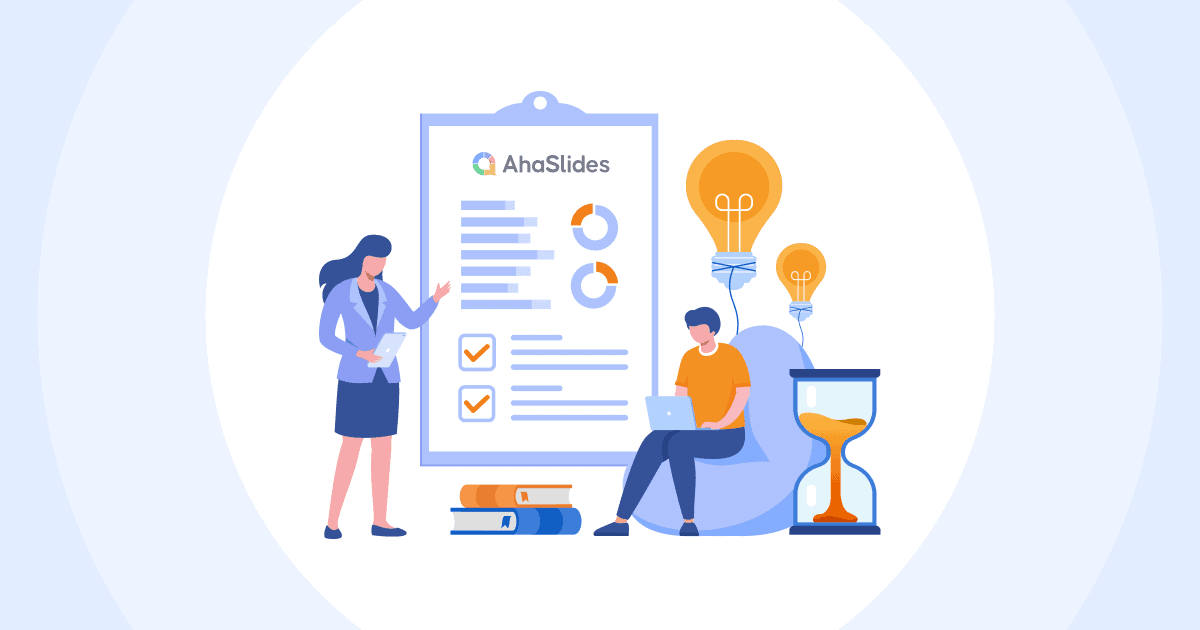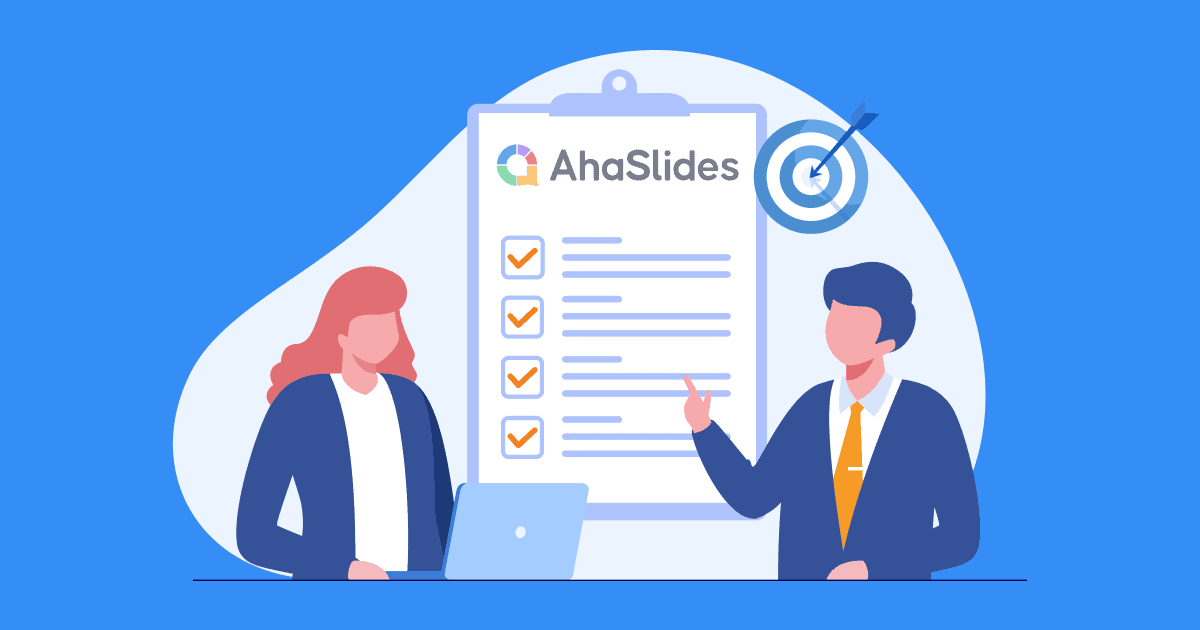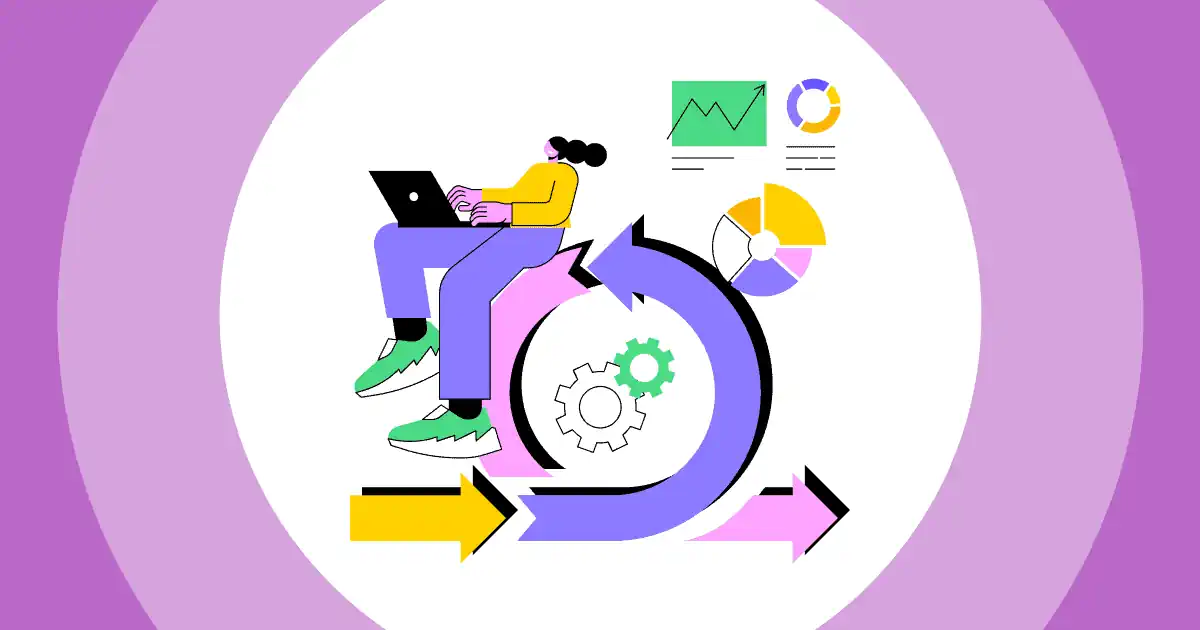Making sure you have the right people with the suitable skills ready to go when you need them - that's manpower planning.
It doesn't matter if you're a startup or an established company, having a smart, well-thought-out staffing plan makes a huge difference in reaching your goals.
In this guide, we'll cover the basics of figuring out your manpower planning process, why it's important, and how to make a plan that'll help your business succeed no matter what's changing out there.
So get comfy, we're jumping into the world of staffing strategies!
Table of Contents
- What is Manpower Planning?
- What are the Key Elements of the Manpower Planning Process?
- What is the Purpose of Manpower Planning in HRM?
- What are the 4 Steps in Manpower Planning Process?
- Manpower Planning Example
- Bottom Line
- Frequently Asked Questions
Tips for Organisation Engagement

Make Your Own Quiz and Host it Live.
Spark joy within your team. Elicit engagement, boost productivity!
Get started for free
What is Manpower Planning?

Manpower planning or human resource planning is the process of forecasting an organisation's future human resource needs and determining how to meet those needs. It involves:
• Analysing the current workforce - their skills, competencies, jobs, and roles
• Forecasting future human resource needs based on business goals, strategy, and projected growth
• Determining any gaps between current and future needs - in terms of quantity, quality, skills, and roles
• Developing solutions to fill those gaps - through recruitment, training, development programs, compensation adjustments, etc.
• Creating a plan to implement those solutions, within desired timeframes and budgets
• Monitoring execution and making adjustments to the manpower plan as needed
What are the Key Elements of the Manpower Planning Process?

The main components of the manpower planning process typically are:
Scope: It involves both quantitative and qualitative analysis. Quantitative analysis includes calculating current and future staffing levels based on workload projections. The qualitative analysis considers the skills, competencies and roles needed.
Duration: A manpower plan typically covers a 1-3 year horizon, with longer-term projections as well. It balances short-term tactical needs with long-term strategic goals.
Sources: Data from various sources are used as input to the planning process, including business plans, market forecasts, attrition trends, compensation analyses, productivity measures, etc.

Method: Forecasting methods may range from simple trend analysis to more sophisticated techniques like simulation and modelling. Multiple 'what if' scenarios are often evaluated.
Usage: The manpower plan specifies solutions for filling skill gaps, including recruitment, training, compensation changes, outsourcing/offshoring, and redeployment of existing staff. Action plans are created to implement the solutions within the timeline and cost constraints. Responsibilities and accountabilities are assigned.
The manpower plan is monitored on an ongoing basis. Contingency plans are developed in case projections do not materialise as planned.
Effective manpower planning requires input and collaboration from all key functional areas, especially operations, finance, and different business units.
Technology tools can assist with manpower planning, especially for quantitative analysis and workforce modelling. But human judgment remains essential.
What is the Purpose of Manpower Planning in HRM?

#1 - Align human resource needs with business objectives and strategy: Manpower planning helps determine the number and types of employees needed to support the company's goals, growth plans and strategic initiatives. It ensures human resources are deployed where they can make the biggest impact.
#2 - Identify and fill skill gaps: By forecasting future skill requirements, manpower planning can identify any gaps between current employee skills and future needs. It then determines how to fill those gaps through recruitment, training or development programs.
#3 - Optimise workforce costs: Manpower planning aims to match labour costs with workload demands. It can identify areas of overstaffing or understaffing so the right number of employees with the right skills can be deployed. This helps control labour costs.
#4 - Improve talents' productivity: By ensuring the right people are in the right jobs with the right skills, manpower planning can boost overall productivity and efficiency. Employees are a better fit for their roles and the organisation maximises their human capital.
#5 - Anticipate future needs: Manpower planning helps anticipate changes in the business environment and employee needs. Consequently, HR can prepare strategies in advance to ensure that the workforce requirements are met. This proactive approach helps in creating an agile and adaptable workforce, which is critical for the success of any organisation.
#6 - Enhance employee motivation: By precisely forecasting and meeting human resource requirements, the company can minimise any ambiguity regarding job duties, overwhelming workloads, and competency deficiencies, all of which have the potential to adversely impact employee contentment.
What are the 4 Steps in Manpower Planning Process?
Organisations can plan an effective manpower planning process by considering these four simple steps, without going overboard:

#1. Demand forecasting
- Based on company goals, strategies and projections for growth, expansion, new product launches, etc.
- Considers factors like how the company is organised, what new tech they can use, and how much they use their workers.
- Determines the number of people needed, by role, skill set, job family, level, location, etc.
- Multiple scenarios are often evaluated to build in some flexibility.
#2. Supply analysis
- Starts with the current number of employees and their jobs/roles.
- Analyses attrition trends, retirement forecasts, and vacancy rates to determine how many people will remain.
- Considers external recruitment timelines, and availability of needed skills in the labour market.
- Evaluates the possibilities for redeployment, job sharing, part-time work and outsourcing.
#3. Gap analysis

- Compare the projections of what people will need in the future with what we already have. That way, we can see if any gaps need to be filled.
- Quantifies gaps in terms of number of people and specific skill sets.
- Identifies gaps in dimensions like competencies, experience levels, job roles, locations, etc.
- Helps determine the scale of solutions required, for example, the number of new hires, trainees, and job redesigns.
#4. Action planning
- Specifies solutions like recruitment, training, promotions, rewards programs, etc.
- Sets implementation timelines, assigns responsibilities, and estimates budgets.
- Develops contingency plans in case of lower-than-expected attrition, higher demand, etc.
- Defines Key Performance Indicators (KPIs) to measure the success of the manpower plan.
- Drives continual adjustment and improvement of manpower planning process over time.
Manpower Planning Example

Haven't got a clear picture yet? Here's an example of the manpower planning process following the 4 essential steps to help you grab the concept better:
A software development company forecasts 30% growth over the next 2 years based on new contracts and projects in the pipeline. They need to develop a manpower plan to ensure they have enough developers to meet this demand.
Step 1: Demand Forecasting
They calculate that to support the projected 30% growth, they will need:
• 15 additional senior developers
• 20 additional mid-level developers
• 10 additional junior developers
Based on their current structure and project requirements.
Step 2: Supply Analysis
They currently have:
• 50 senior developers
• 35 mid-level developers
• 20 junior developers
Based on attrition trends, they expect to lose:
• 5 senior developers
• 3 mid-level developers
• 2 junior developers
Over the next 2 years.
Step 3: Gap Analysis
Comparing demand and supply:
• They need 15 more senior developers but will only gain 5, leaving a gap of 10
• They need 20 more mid-level developers with only gain 2, leaving a gap of 18
• They need 10 more junior developers with only lose 2, leaving a gap of 12
Step 4: Action Planning
They develop a plan to:
• Hire 8 senior developers and 15 mid-level developers externally
• Promote 5 internal mid-level developers to senior level
• Hire 10 entry-level trainees for a 2-year development program
They assign recruiters, set timelines and establish KPIs to measure results.
This is just one example of how an organisation might approach manpower planning to meet their future human resource needs based on projected business demand. The key is to have a systematic, data-driven process that identifies gaps and develops smart solutions.
Bottom Line
In today's fast-paced business world, it's crucial to stay ahead of the curve. And manpower planning process is powerful to forecast your company's future needs and plan accordingly, thus helping to stay competitive and ensuring you're prepared for whatever lies ahead.
Frequently Asked Questions
What are the 4 major purposes of manpower management?
Manpower management ensures an organisation has the right number of people with the right skills and expertise to achieve its goals. It aims to use people productively, develop their potential and build a positive relationship between employees and the company. This is accomplished through practices like recruitment, training, performance management and compensation management.
What are the 6 steps in human resource planning?
The 5 steps in an effective manpower planning process are · Forecasting demand · Appraising current manpower · Analysing gaps · Planning solutions to fill gaps · Implementation and review.








